“Utterly useless!” So wrote a frustrated U.S. Army Captain in a letter to the Chief of Ordnance of the United States Army in late 1916, requesting to exchange his Automatic Machine Rifle, Model of 1909 light machine guns for the new Lewis gun. “We have been using these guns for four years and have never been able to get more than two shots out of any of the guns without a jam.”
The Hotchkiss Model 1909 as made in France by the Hotchkiss Company was known on the European Continent as the Hotchkiss Mle 1909. Copied and made in the United States, it was designated as the Automatic Machine Rifle, Caliber .30, Model of 1909, or colloquially as the Benet-Mercié after the two men at Hotchkiss responsible for its development. The gun had a cyclic rate of fire of about 400 rounds per minute with an actual deliverable rate of fire of about 150 rounds per minute.
Laurence Benet was an American engineer who worked for the Hotchkiss Company in Paris, France. He, along with another Hotchkiss engineer name Henri Mercié, collaborated to develop an air cooled, gas operated, light weight machine rifle based on the Hotchkiss Mle 1900 and Mle 1907 heavy machine gun design. The Mle 1909 differed from these heavy machine guns in that it weighed just 30 pounds and was fitted with a wooden stock with elevation gear and a bipod. The main modifications mechanically were the means by which the breech closed and changing the feedway from the left to right side of the gun and redesigning the feed mechanism to accept the horizontal 30-shot feed strip with the cartridges held on the underside of the feed strip rather than resting on top of the feed strip. Being a simply designed gun reduced the number of parts of the gun to just twenty five. Located in the forward part of the receiver directly behind the breech is a cylindrical device known as the fermature nut. The function of the fermature nut is to lock the breech closed before firing and unlocking when the gas pressure has dropped to a safe level. A unique aspect of this gun is that it is capable of changing barrels quickly. When the gun was used in sustained fire the barrel would get very hot. The barrel can be removed and a cool barrel replaced in a very short period of time.
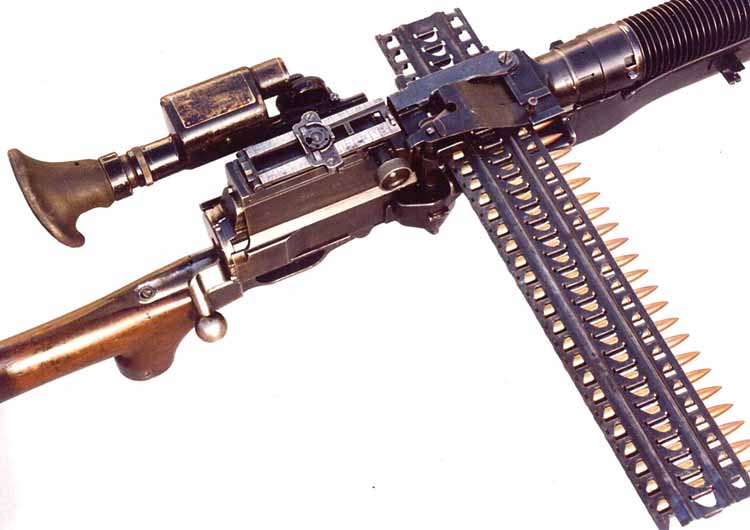
In 1909, the French Army adopted the Hotchkiss Mle 1909 gun chambered in their 8mm Lebel cartridge. It was also manufactured in Great Britain by Hotchkiss and was adopted by the British and designated as the Hotchkiss Mk I and Mk II Portable chambered in .303 caliber. (The Mk I had a wooden stock and was strip fed, while the Mk II was the tank or cavalry version with a removable L-shaped metal stock and could use a strip or a special articulated metal belt.) Also in 1909, the United States adopted it as the standard U.S. machine gun chambered for the .30-06 cartridge and, after a lengthy set of trials, an order was placed by the U.S. Army with the Hotchkiss Company for 29 guns. Funding was so tight in those days that that was all the Army could afford to buy. However, the rights to manufacture the gun in the United States were secured and the Colt’s Patent Fire Arms Manufacturing Company and the Springfield Armory were contracted to produce the Hotchkiss as the Automatic Machine Rifle Model of 1909. A discernable difference between the two manufacturers is that the Colt has a smooth barrel in front of the cooling fins whereas the Springfield Armory has sharp-point checkering around the barrel in front of the cooling fins – presumably to assist in better gripping during barrel changes. It has been reported in the past by many sources (possibly merely repeating the same information) that both manufacturers combined produced a grand total of 670 guns. However, higher serial numbers have been encountered (i.e., a Colt in the 900 range with Navy markings) so more were clearly made and it is possible the 670 number applies to those purchased by the U.S. Army rather than the number produced; as one source notes that another 400 were made for the U.S. Navy and Marines. Unfortunately, production records have not been encountered to determine if the serial numbers from each manufacturer were mixed, or if each manufacturer started with 001.
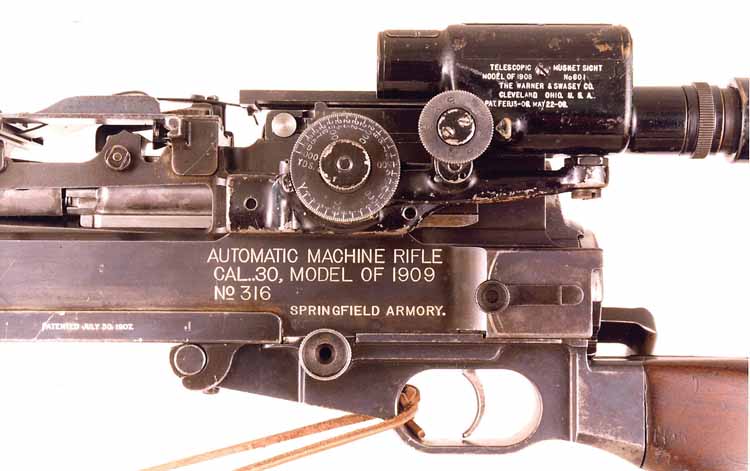
The stock of the U.S. Model of 1909 is made of well-seasoned black walnut, cut down in front so as not to interfere with the sighting and a pistol grip. On the upper end of the butt plate is a long tang for supporting the weight of the weapon on the shoulder when firing without the elevating mechanism.
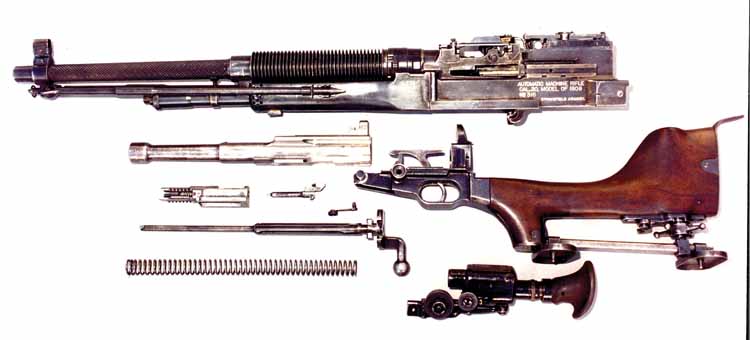
The Model of 1909 had a unique rear monopod elevation system that fits into the rear of the wood butt stock and employs a double elevation screw and a foot plate that slides on a bar attached to the elevation screw. When in the closed position, the elevation screws screwed up into the buttstock and the foot plate rotated along the axis of the gun and locked into place with a metal catch. When the foot plate was unlatched, the elevation screw could be extended by an elevation wheel. When the desired height was obtained, the elevation wheel could be locked into position and the foot plate rotated to be perpendicular to the axis of the gun.
The gun was also fitted with a bipod that is attached underneath the front sight barrel band. The bipod is rather flimsy and an often field expedient solution to help prevent the bipod from collapsing was to run a length of leather strip from one front leg through the trigger guard and back to the other side front leg. The legs can be folded back and secured to the hand guard during transportation.
The front sight for the Model of 1909 consisted of a thin blade slightly beveled to the front, and on each side is cut a circular groove to better define the sight proper. The lower portion has a dovetailed lug and engages the dovetail groove of the front-sight carrier allowing for adjustment for deflection. The front sight is protected by a hood.
The rear sight has an adjustable leaf that is graduated from 0 to 2,800 yards. The drift slide moves forward and back on the leaf and on the top is small open sight. There is also a circular aperture disk containing five sight openings: four peepholes, 0.04, 0.06, 0.08 and 0.10 inch in diameter, and one large aperture which contains an open sight. The entire rear sight in on a movable base that by turning the windage correction knob moves the base left or right for windage corrections. There is a scale on the base with wind-gauge graduations, each point of which corresponds to a lateral deviation of 4 inches for each 100 yards.
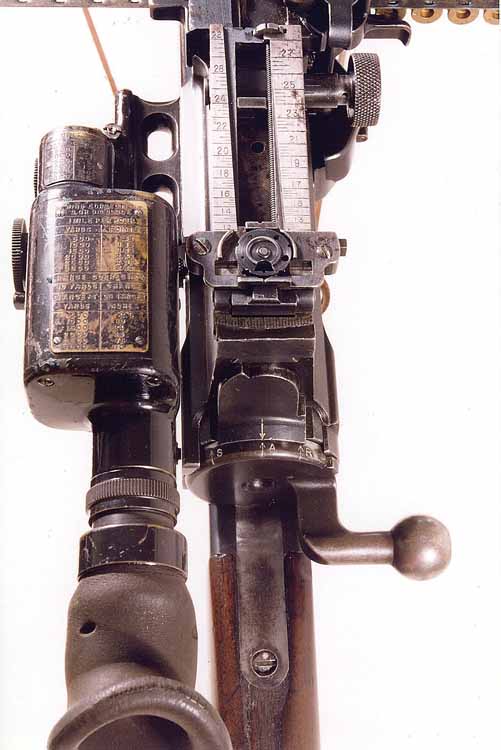
The Automatic Machine Rifle Model of 1909 was issued for service with the Model of 1908 Warner & Swasey telescopic musket sight, which was originally used for sharpshooter use with the Model of 1903 Springfield rifle. The sight was mounted on a dovetail bracket on the left side of the receiver rather than directly above the centerline of the weapon. The rationale behind this was that the barrel heated up during firing and produced heat mirages that distorted the sight picture. Mounting on the side of the receiver enabled the firer to avoid the heat mirage and keep proper target acquisition. The sight also aided in target recognition and allowed the gunner to observe his strikes. The sight is 6-power and has a field of 4 1/2 degrees. The glass reticule is etched with vertical and horizontal cross lines and a stadia line, the latter being so placed that it spans the height (5 feet 8 inches) of an average man standing at a distance of 1,000 yards. Located on the top of the telescopic sight is a brass placard with wind and range tables and a drift table.
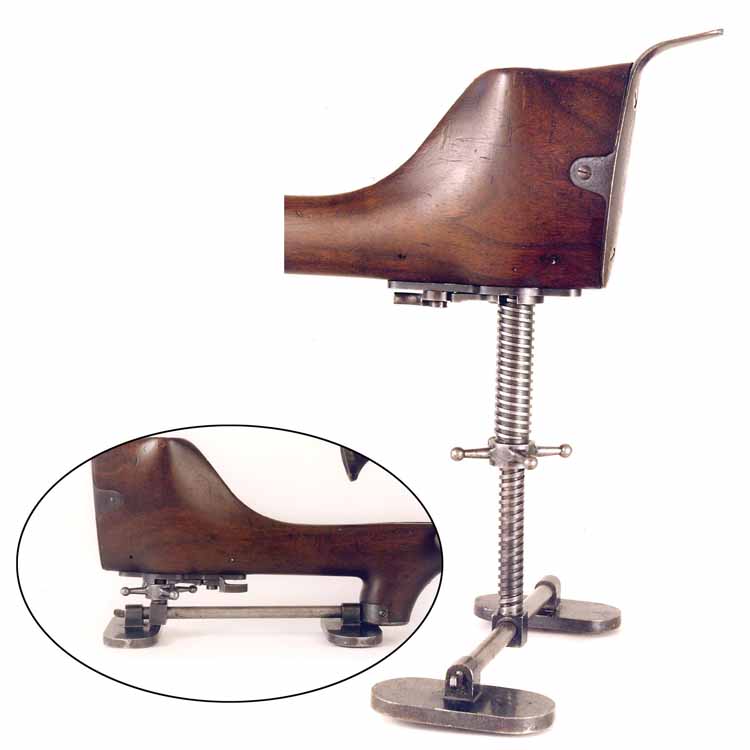
Each rifle was furnished with feed strips made of sheet steel, spring tempered, by means of which the cartridges are fed into the rifle. Each feed strip is designed to hold 30 cartridges. The ammunition box is designed to hold 10 loaded feed strips (300 cartridges), and is made of seasoned white oak or ash. It is about 18 inches long and nearly 8 inches wide. The end and sides are dovetailed together, and the bottom is secured by screws. The body contains five longitudinal partitions, in each of which can be placed two feed strips. The lid is held closed by the lid catch. On the left end of the box and the front side are leather handles. The seats for the handles are recessed so the handles will be flush with the sides of the box.
The machine gun and its tactical use were new and unproven in the first decade of the twentieth century. Major General Julian Hatcher, in his book Hatcher’s Notebook, best describes the tactical role of the machine gun and how it was put into service. “Now if at that time we had known the least thing about the tactical role of machine guns, we would have realized that we ought to have two kinds in the Army at the same time; the heavy type for one kind of action and the light type, for a totally different use. We didn’t, however, realize this or anything else much about these matters, so we adopted this light gun as THE machine gun of the Army. In those days, every regiment had a machine gun platoon, made up by detailing men from regular companies for temporary duty in the machine gun platoon. This platoon had four guns. It was a regular authorized company, but just a scraped together aggregation of men who could best be spared from their places. Many times the temptation to get rid of unwanted problem children was solved by company commanders by sending them to the machine gun platoon. A pretty sorry outfit it was, as a rule.”
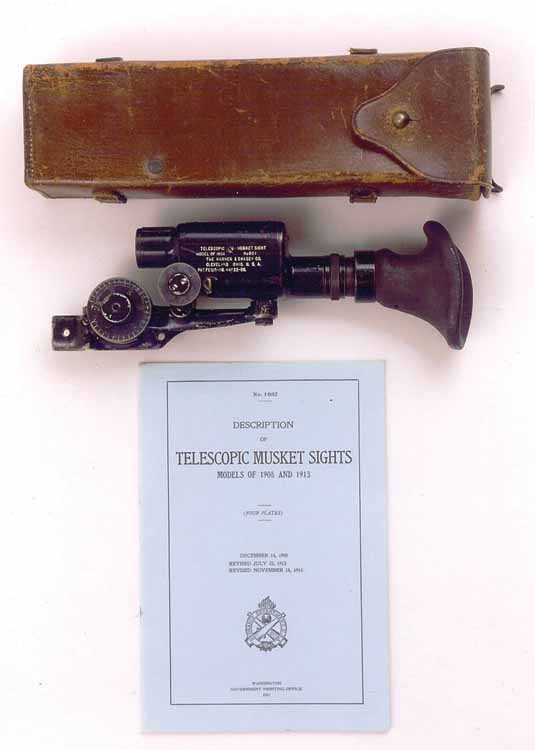
The Automatic Machine Rifle Model of 1909 was not a bad gun but was ill suited to be the main machine gun of the U.S. Army, though this was the historic roll it played from 1909 to 1916. It was finally realized that different types of machine guns were needed for different tactical roles. The Model of 1909 was relegated to training use during World War I being declared obsolete in 1918 and ultimately superseded by the far superior Model of 1918 Browning Automatic Rifle (BAR).
The Model of 1909 saw limited use in a tactical role at the landing at Very Cruz in 1913. Then one day in 1916, all hell broke loose and the gun acquired a reputation for unreliability that to this day has cast a dark shadow over the gun.

In April, 1916, the Mexican bandit Pancho Villa staged a sneak attack across the U.S. border, raiding the small town of Columbus, New Mexico three miles north of the U.S. and Mexican border. The raid on Columbus occurred in the middle of the night and caught the sleepy town completely by surprise. No one was expecting an attack. There was a small garrison of U.S. Cavalry stationed in Columbus with a machine gun platoon consisting of four Model of 1909 machine guns which, when routed from their sleep, managed to collect themselves and their guns along with ammunition and began to take defensive positions.
Some civilians and soldiers were killed in the ensuing battle and reports emerged stating that none of the Model of 1909s were able to operate reliably during the course of the fight. Afterward, the excuse given by the machine gun crews was that the night was so dark they had trouble with the complicated loading and feeding of the weapon.
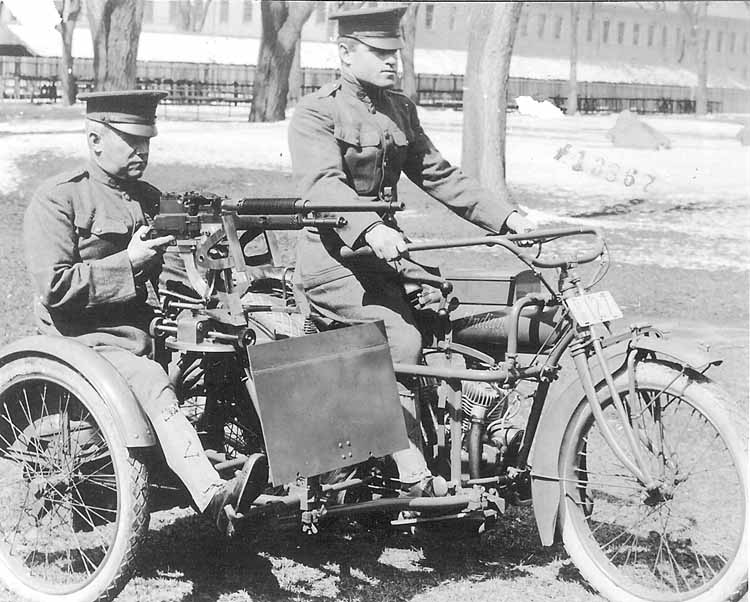
The newspapers of the day, already horrified that the attack even occurred in the first place, jumped on this information and raked the U.S. Army and the Chief of Ordnance over the coals declaring that the rules of warfare should be changed so that battles would only take place during daylight hours so that our machine guns could take part in the action. The newspapers called the Model of 1909 the “Daylight Gun” for this reason and wrote many scathing and satirical articles on the subject.
However, in an article published in the November 10, 1917 issue of the Saturday Evening Post, Hatcher, then a Captain, made the following statements. “The night was dark, and naturally some trouble was experienced with the guns. Occasional jams occurred; but in each case the trouble was overcome and the guns continued in the fight. At least two of the four guns were always in action. These guns were not always firing though, as they frequently had to stop for lack of a suitable target.
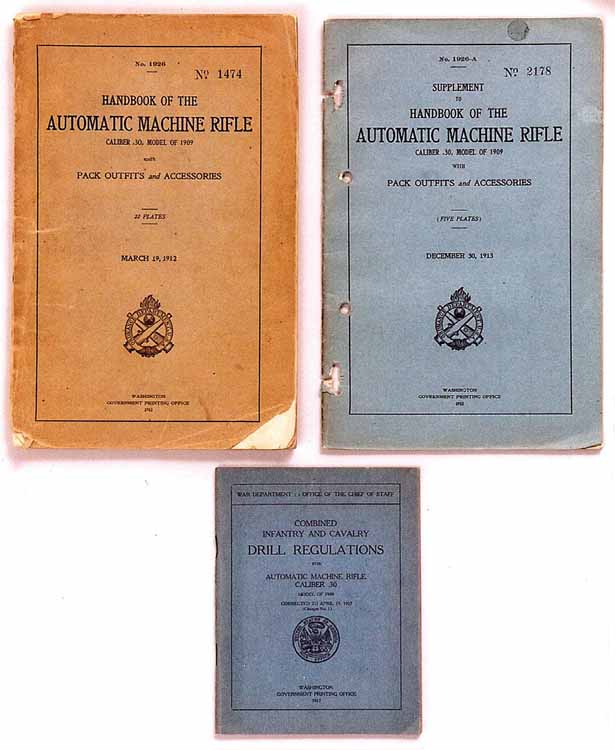
“To fire machine guns in the dark streets of a town without a well defined target,” Hatcher continued, “is to risk killing friend as well as foe.
“There were many highly excited people present, however, and to these it no doubt seemed that all the guns should be firing, regardless of whether an enemy was in sight or not. Thus, it happened that a report started that the machine guns were not a decisive factor in saving the town; and in spite of occasional jams, they fired nearly 20,000 rounds of ammunition in the fight.”
The result of this controversy resulted in the Army re-evaluating the heretofore haphazard methods of training and then establishing a proper machine gun school. The former machine gun platoon comprised of misfits and trouble makers was replaced and a machine gun company was formed in each regiment.
The machine gun school was established in Harlingen, Texas in the Rio Grande Valley. The machine gun instruction school taught the proper training for the Colt Automatic Gun Model of 1895/1914, the Maxim Model of 1904, the Automatic Machine Rifle Model of 1909 and the Lewis Gun Model of 1916.
The school ran for nine months until war was declared in April 1917. The men who went through the school became the backbone of the U.S. Army machine gun corps during World War I.
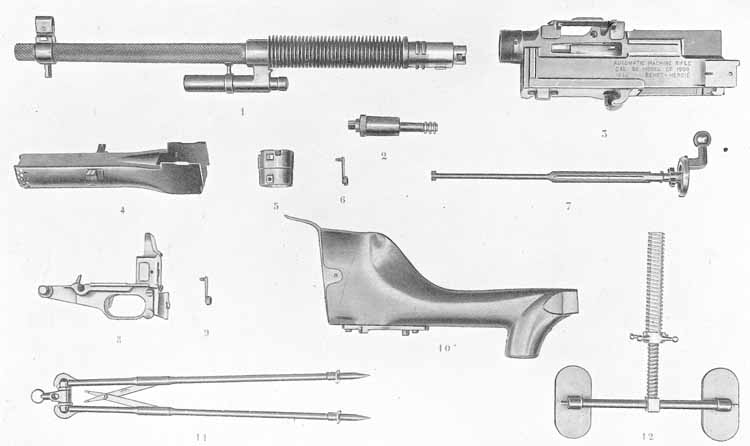
They were desperately needed because the United States was truly ill-equipped to enter the war. The total inventory of machine guns in the U.S. when war was declared consisted of 670 Model of 1909s (for the Army), 282 Colt Maxim Model of 1904s and 143 Colt Automatic Guns Model of 1985/1914s. There were also 353 Lewis guns but they were chambered for the British .303 cartridge.
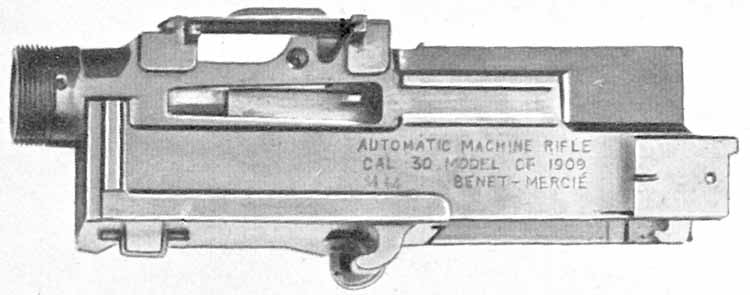
The Automatic Machine Rifle Model of 1909, for better or worse, has its place in early machine gun development and history. Due to lack of training of the troops it failed to live up to expectations. Yet, both the French and British versions of the same gun went to war and served admirably and with distinction.
| This article first appeared in Small Arms Review V15N2 (November 2011) |










